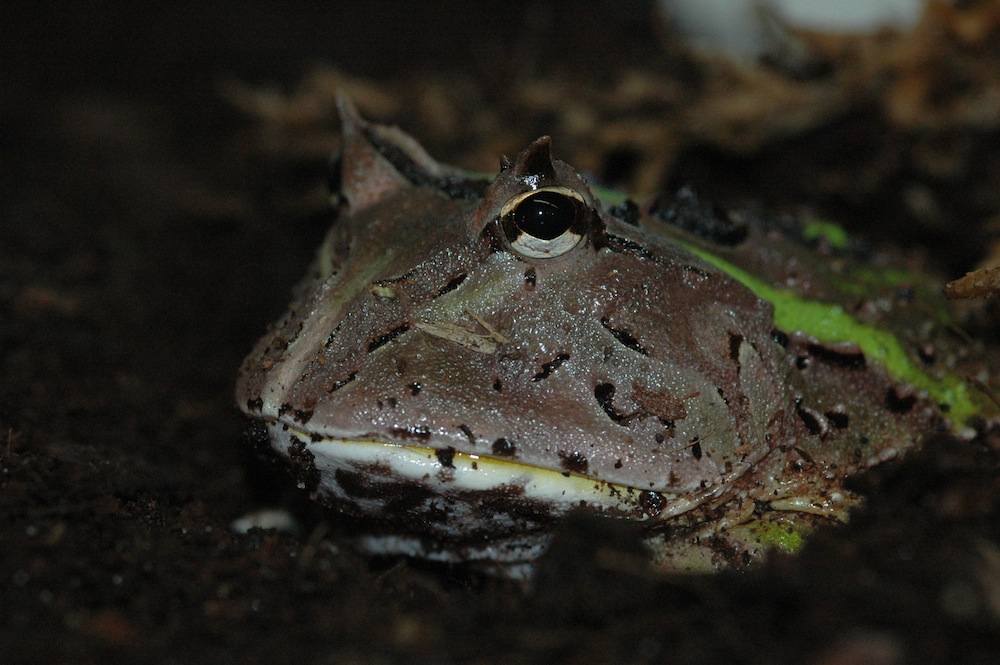Frog Licks Bigger Prey Thanks to Super-Sticky Tongue

Horned frogs are capable of consuming prey that are very large relative to the amphibians' own bodies, and they may be able to pull off this impressive feat thanks to the strength of their tongues, new research suggests.
When the frogs catapult their tongues to catch a hapless creature, the organ's adhesive forces exceed the weight of the animals' prey, and sometimes even the frog's own body weight, according to the study detailed today (June 12) in the journal Scientific Reports.
"The attachment to the prey must at least be strong enough to prevent the prey from escaping before it is grasped by the jaws — depending on the size of the prey, it will even be lifted off the ground and actively pulled into the mouth of the frog," the researchers wrote in the study.
Many frogs have sticky, mucus-laden tongues that can reel prey into the animals' mouths. But until now, scientists didn't understand how strong the tongues were, how they attach or what role the mucus plays.
In the study, Thomas Kleinteich, a biologist at Christian-Albrechts-Universität-Kiel in Germany, and his colleagues measured the tongue stickiness of captive horned frogsof the group Ceratophryidae, which are native to Argentina, Bolivia, Brazil and Paraguay. These frogs are known to sit and wait for their prey, which include lizards, snakes, rodents, earthworms, spiders, insects and other frogs.
The researchers got the frogs to fire their tongues at a pressure-sensitive glass panel by placing prey on the other side. Results showed that the pulling forces were about three times the frogs' body weight, and in the case of one frog, as much as six times its weight.
The strength of the forces increased when the impact was high-pressure and lasted only a short time, the researchers said. Most tongue impacts were lightning-fast, averaging less than 40 milliseconds.
Get the world’s most fascinating discoveries delivered straight to your inbox.
The strength of adhesion increased with lower levels of mucus coverage in the contact region, which suggests the mucus doesn't act like glue. Rather, the tongue surface itself seems to determine adhesiveness, though the mucus may increase surface friction, the researchers said.
The tongue stickiness measured in the study was most comparable to pressure-sensitive adhesives used for tapes or labels, the researchers said.
However, the glass surface could have different adhesive properties from surfaces in the frogs' natural habitat, such as fur, feathers or leaf surfaces, the researchers said.
Previously, scientists have only measured the stickiness of salamander tongues, and found these forces were only a fraction of the creatures' bodyweights. In contrast to salamanders, which rely on firing their tongue skeletons out of their mouths, frogs project their tongues by rapidly dropping their lower jaws. The two animals are thought to have evolved their tongue ballistics independently, the researchers said.
Editor's Note: If you have an amazing frog or amphibian photo you'd like to share for a possible story or image gallery, please contact managing editor Jeanna Bryner at LSphotos@livescience.com.
Follow Tanya Lewis on Twitter and Google+. Follow us @livescience, Facebook & Google+. Original article on Live Science.



